5 Huge Companies That Once Were Failing Miserably
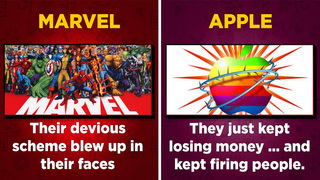
It might feel right now like the companies who control us are invincible monopolies, as mighty and unchanging as the mountains themselves. But that idea is pure foolishness, we tell you! The following companies, as powerful as they are, hit major roadblocks in years past. If things went a little differently, they wouldn't now exist at all.
Things Went Bad For Harley-Davidson When A Bowling Ball Company Bought Them Up
Harley-Davidson's history as an American icon stretches back many years. The company started out making high-quality bicycles (because motorcycles had barely been invented yet), the military contracted to them to build anti-Nazi hogs for World Wars, and they're still going strong today. You might assume their reign as makers of iron steeds was unrivaled and unbroken.

But For A While ...
At the end of the '60s, Harley had to face off a bunch of hostile takeovers, until they were finally bought up by the company American Machine and Foundry. AMF built bowling balls. Actually, AMF built a whole lot of things, and that was the problem. They thought of Harley as one small part of their manufacturing empire, so they fired a bunch of Harley people and cut back on investment, while ramping up production so much that quality standards had to drop. And they made Harley diversify into a few ill-thought-out ventures.
How embarrassing did it get for them? Let's put it this way: A lot of retrospectives from this period spotlight how Harley followed their bicentennial "Liberty Edition" motorcycle with a poorly selling "Confederate Edition" ...
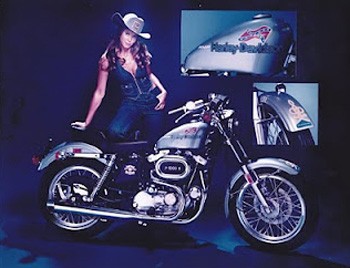
... but at the time, that wasn't even an embarrassment next to the other stuff AMF had them cranking out. Like the years in the '70s when they were building Harley-Davidson snowmobiles:
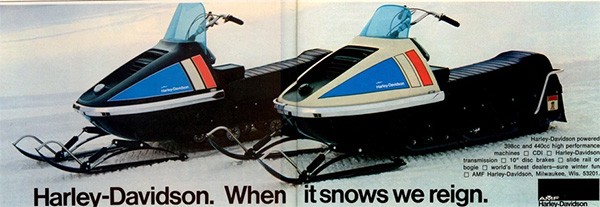
Which was still more on-brand than the Harley-Davidson electric golf cart.
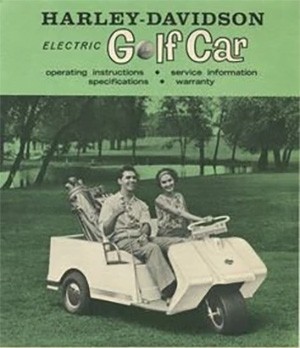
But in 1981, the managers of Harley-Davidson managed to buy control of the company back from AMF. The exact process by which this happened isn't interesting enough to describe, but we're sure a sufficiently inspired screenwriter will be able to make it thrilling in their Harley-Davidson Hollywood movie (starring Margot Robbie as Harley and Pete Davidson as Davidson). The final shot in this movie will be something that happened in real life: the new owners driving the 800 miles to their new headquarters in Milwaukee in formation, on bikes.
Marvel Comics Went Bankrupt In The 1990s
Marvel is such a behemoth nowadays that even those who like watching their movies are still obligated to hate them, just out of principle. If movie theaters ever totally reopen, Marvel will be able to release a movie about Hypno-Hustler fighting Chair Man, and it will gross $1.2 billion despite no one involved having even read the full script pre-release. This year, Marvel is releasing a new TV series every hour, on the hour. According to a memorandum from the Department of Justice, you are required to watch all of them, else be formally exiled.
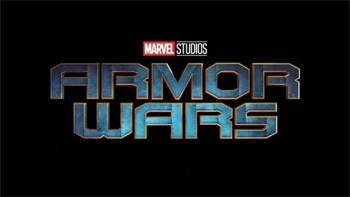
But For A While ...
Flash back to 1993, and Marvel Comics was worth ... well, quite a lot, actually. But it wasn't a value based on purchases made by billions of people worldwide. Instead, Marvel were enjoying the short-lived rewards of the '90s comic book bubble.
News had spread in recent years of the occasional comic book reader discovering their old childhood toys were worth thousands of dollars. This ushered in a new generation of comic book collectors, who hoarded unopened merchandise not because they were obsessive weirdos but because they thought collecting would make them rich. Marvel profited off their biggest fans buying 20 copies of every issue. Then you have to factor in the machinations of billionaire Ron Perelman (no relation to actor Ron Perlman, who's just the Dark Horse Comics Ron P.):

Perelman bought Marvel for $82 million. He raised prices and released multiple versions of comic books to cater to speculators. Then he started catering to a more hardcore type of speculator: investors. He took Marvel public, and investors rushed to buy shares, based on the undeniable fact that the stock value was currently rising. With the stock price soon up 1,500 percent, Perelman made a killing personally. He sank Marvel's profits into a bunch of risky acquisitions, which ... okay, if your eyes are glazing over at the finance talk, let's also say Perelman put on a supersuit and murdered the entire board of directors. (Our lawyers have obligated us to note that Perelman did not really put on a supersuit and murder the entire board of directors.)
In time, comic book collectors realized none of the books they were squirreling away were rare enough to ever gain value. They stopped buying, comic book stores shut down, Marvel's revenues fell, and the stock price plummeted. Marvel declared bankruptcy in 1996. Another billionaire managed to take over the company -- Carl Icahn, future economic adviser to the Trump administration -- and Marvel famously sold off the movie rights to X-Men, Spider-Man, and more to stay afloat.

Then came the 2000s, and X-Men and Spider-Man movies made a ton of money (for other companies). And Marvel, now having ditched Perelman and Icahn, eventually got around to seriously entering the movie business. Today, their characters are icons before which all must bow. The 2028 Olympics will be held in Los Angeles, and Captain America will presumably light the torch. Everyone in the world will cheer. All will be forgiven.
Disney Movies Used To Be Far From Box Office Juggernauts
As mighty as Marvel may be, they are but one tentacle wielded by the abomination that is Walt Disney Pictures. Disney is so unstoppable now that they shat out a straight-to-VHS Frozen sequel, mailed it to theaters by mistake (we assume), and it became the highest-grossing animated film of all time. Highest, that is, not counting the Lion King remake, which was also released by Disney in 2019. Over the course of the next three years, Disney will remake every movie ever filmed, then they'll remake them all again, and people will keep showing up to watch.

But For A While ...
In the beginning of the '80s, earnings were down over at Disney. The actual numbers are probably deeply revealing to those who understand that sort of thing, but we'd really like to point you to this assessment from the New York Times in 1983. They were predicting that Walt Disney (which, we now know, would go on to own everything), was ripe for a takeover -- not for its moviemaking division, which held little future promise, but simply for the large amount of undeveloped land it owned. The newly opened Epcot Center, today a joke, was considered one of the few profitable assets among Disney's failing holdings.
They were still making movies, but few were big successes. It would be a bit longer before Michael Eisner took over, got the animation division working again and also made a bunch of more mature movies under the Touchstone label. For now, people were looking uneasily at the upcoming Splash, apparently some kind of pornographic mermaid story complete with swearing and nudity.
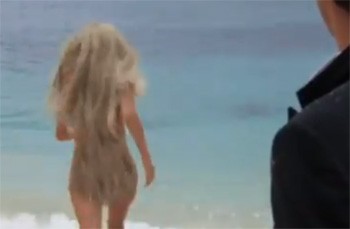
Considering just how much inescapable influence most Disney movies force on us, it's remarkable to look at some of their failures from this period and see how no one remembers them today at all -- we don't even remember how hard they bombed. Have you even heard of their 1980 film The Watcher in the Woods? The Exorcist had been one of the top-grossing films of the entire 1970s, so Disney thought it was time to try their hand at horror. "This could be our Exorcist!" said Disney producer Tom Leetch. The film barely made back half its budget.
And maybe you've heard of The Black Cauldron, which didn't even make back half its budget. It failed so hard Disney scrapped their whole animation system and switched to more of an assembly line approach (which would later prove very successful). And even those who heard the cautionary tale of The Black Cauldron seem to have totally forgotten 1979's The Black Hole.
The Black Hole was, at the time of release, the most expensive movie Disney had ever made. It was a sci-fi film, and in the wake of Star Wars (which Disney had foolishly passed on), it seemed audiences would jump to see another sci-fi flick. Instead, it was more like Star Wars had scratched that itch for now, and so the Black Hole grossed far below expectations. And so Disney vowed to eventually destroy Star Wars no matter how long it might take.
Early HBO Was Just Some Weirdo Regional TV Provider That Showed Polka
Shows on HBO span every genre and format, with only one thing connecting them all: quality. For years, they've boasted an impeccable track record of top-tier television programs, and also True Blood. The craftsmanship on display has been so impressive and consistent, that many fans reacted with fear and distress on learning that AT&T is pushing them to go "bigger and broader."

But For A While ...
Things were difficult at the start for this early cable pioneer trying to get a foothold in the northeast. For starters, they didn't have access to satellites to transmit signals. They had to buy towers that shot out microwaves. Also, it didn't make financial sense for them to keep broadcasting 24/7. They were showing new movies and wanted to make sure someone was awake and watching them, so they only stayed on the air for nine hours a day.
But they could only rely on existing movies for so long. In time, it became clear that they really had to make their mark on the world, they had to show the public what HBO was capable of by broadcasting something no movie studio had put together. Not counting sports telecasts, the first ever original programming from HBO aired on March 23, 1973. It was the Pennsylvania Polka Festival.
Why? Because John Walson, the inventor of cable television and the owner of Teleservice Cable (which HBO was using), was dancing the polka there with his wife, and HBO wanted to stay on good terms with him. Alternatively, it was some kind of twisted plan to blackmail Walson. Either way, it worked.
In The Late '90s, Apple Was Teetering On The Edge Of Disaster
In 2018, Apple became the first company valued at $1 trillion. Then in 2020, they became the first company valued at $2 trillion. At this rate, the company will soon be worth more than the entire rest of the world combined, and while that logic might make zero sense, so does the concept of assigning value using market capitalization.
Even if Apple will not keep doubling in size, we can all count on them remaining successful because the brand is that strong, and people will keep buying their products no matter what.
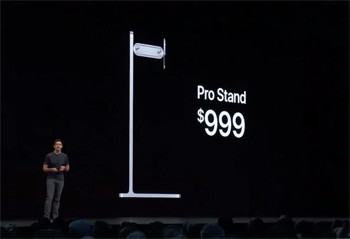
But For A While ...
To those of you reading this in 2021 or later (a fair percentage of you): What do you think the following magazine cover art means?:
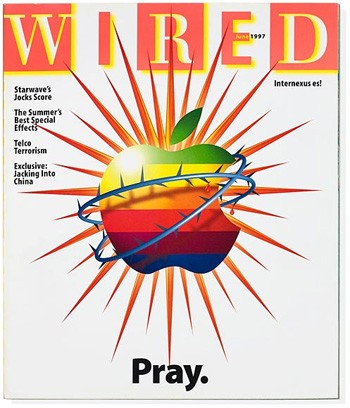
Something about praying to be spared Apple's wrath? Or praying to receive some Apple product that's in short supply? The cover story is actually titled "101 Ways to Save Apple," with "Pray" being the best way -- that's how dire things were for Apple, according to Wired.
This magazine came out in 1997. We're not highlighting Apple's humble beginnings working out of some garage; this was a decade and a half since their famous 1984 ad, Apple already had their computers in schools across America, and a Powerbook laptop had saved the world in Independence Day. Even so, the company was facing oblivion, said tech insiders. Publicly, Apple wasn't exactly setting the world on fire, thanks to stuff like their brick of a PDA that never quite caught on, and behind the scenes, the entire decade was a string of failures. Their stock peaked in 1991. Then came years of layoffs, losses, and resignations.
So what were Wired's suggestions? Get out of the hardware game, was one of them. In hindsight, no, that was not good advice. They also suggested Apple seek a buyout from IBM or Motorola, and again, looking back, that would not have improved Apple's prospects. But Wired did have some more useful ideas. "Give Steve Jobs as much authority as he wants in new product development," they urged. Better still was this joke suggestion: "Have Pixar make 3001: A Space Odyssey, with HAL replaced by a Mac." In 2008, Pixar would release WALL-E, set a thousand years in the future. To voice the HAL-inspired computer AUTO, they used Mac text-to-speech software.
Follow Ryan Menezes on Twitter for more stuff no one should see.